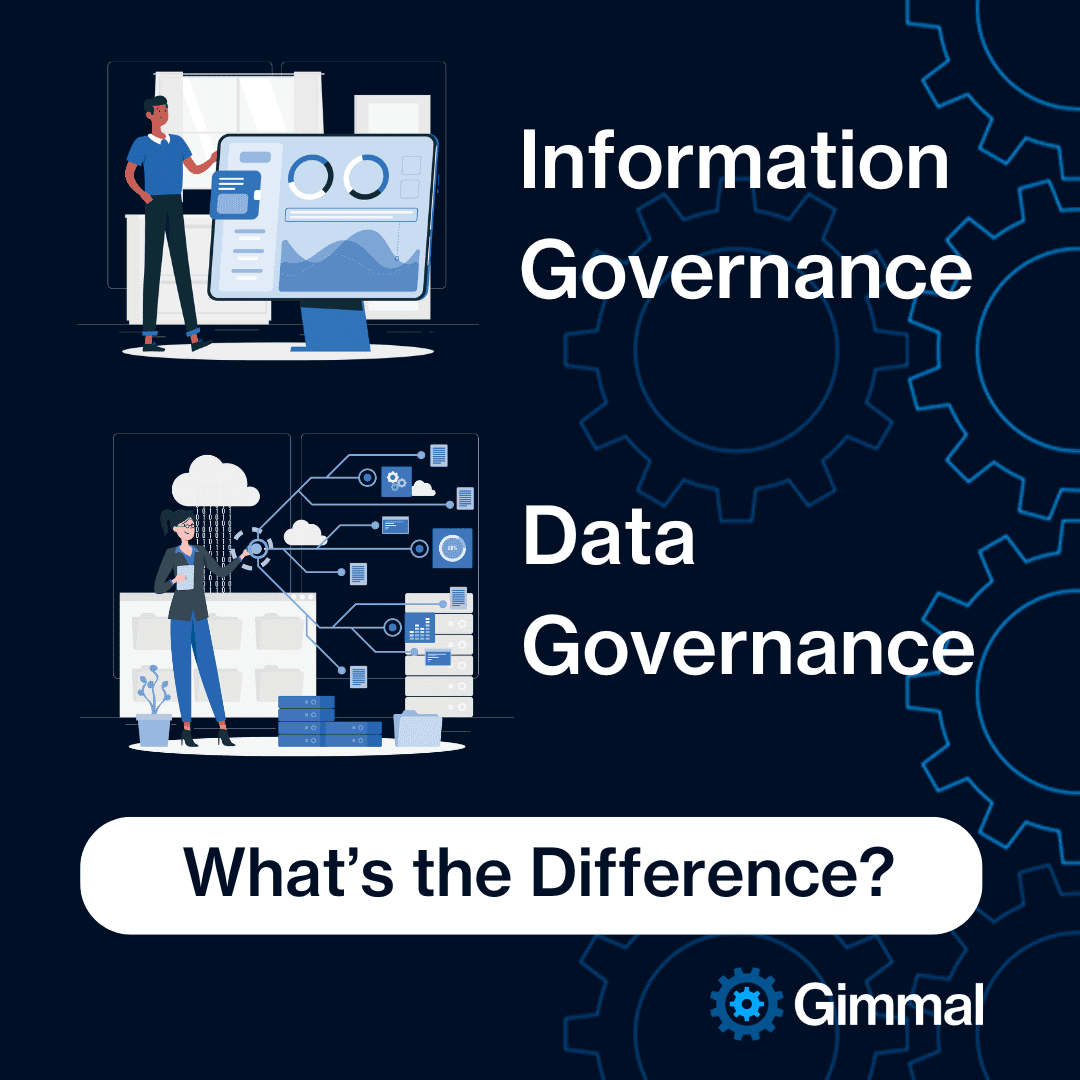
In the digital era, the concepts of information governance and data governance have become increasingly significant. While they might seem interchangeable, understanding their differences is essential for any organization that aims to manage its information assets responsibly and effectively. This blog post delves into the distinctions between information governance and data governance, offering clarity on each term’s scope, objectives, and practices.
Information Governance: The Broader Context
Information governance is an overarching framework that encompasses the policies, processes, standards, and metrics that ensure the effective and efficient use of information in enabling an organization to achieve its goals. It covers all types of information, including both digital and physical formats, and spans across the entire lifecycle of the information—from its creation to its eventual disposition.
Objectives of Information Governance:
- Compliance and Risk Management: Ensuring that information complies with legal, regulatory, and organizational policies and that risks associated with information are identified and managed.
- Information Protection and Privacy: Safeguarding sensitive data and protecting personal information in accordance with privacy laws and regulations.
- Value Creation: Maximizing the value derived from information assets to support business decision-making and strategy.
- Efficiency: Streamlining information management processes to reduce costs and improve productivity.
- Interoperability: Facilitating the sharing and use of information across different systems, departments, and stakeholders.
Information governance is strategic in nature, involving senior management and spanning multiple disciplines. It is concerned not just with data but also with the management of information in other forms, such as electronic documents, emails, multimedia, and even paper files.
Data Governance: A Subset of Information Governance
Data governance is a subset of information governance that focuses specifically on the proper management of data assets within an organization. It deals with the quality, consistency, usability, security, and availability of data. Data governance programs are typically more technical in scope than information governance programs and involve detailed policies and procedures related to the handling of digital data.

Objectives of Data Governance:
- Data Quality: Ensuring that data is accurate, complete, and reliable.
- Data Consistency: Maintaining consistency of data across different systems and databases.
- Data Security: Protecting data from unauthorized access, breaches, and theft.
- Data Usability: Making sure data is organized and accessible to support business processes and decision-making.
- Regulatory Compliance: Ensuring that the management of data complies with relevant laws and standards.
- Data governance initiatives are often driven by IT departments and involve data stewards, data architects, and data analysts who work to implement the policies and practices that ensure the integrity, interoperability, and security of data.
Key Differences Between Information Governance and Data Governance
Scope and Breadth
The primary difference between information governance and data governance lies in their scope. Information governance has a broader scope, addressing all types of information throughout its lifecycle. Data governance, on the other hand, is focused solely on the proper management of digital data.
Strategic vs. Operational
Information governance is generally considered a strategic initiative that integrates policies and processes across different business units and disciplines. Data governance is more operational, dealing with the tactical aspects of managing and processing data.
Multidisciplinary vs. Technical
Information governance involves a multidisciplinary approach, including areas such as legal, compliance, records management, IT, and business operations. Data governance is more technical and is usually centered around IT processes and the handling of data within digital systems.
Value Focus vs. Quality Focus
While both information governance and data governance aim to enhance the value of information assets, information governance is more focused on extracting business value and ensuring that information supports strategic objectives. Data governance emphasizes the quality, consistency, and availability of data as a key asset.
Implementation Considerations
Organizations that recognize the distinctions between information governance and data governance are better equipped to implement effective governance strategies. Here are some considerations for implementation:
- Leadership and Ownership: Assign clear roles and responsibilities for both information governance and data governance. Senior leaders should drive information governance, while IT specialists should oversee data governance efforts.
- Policies and Standards: Develop comprehensive policies and standards that address both strategic information governance issues and operational data governance concerns.
- Technology and Tools: Invest in technology and tools that support both information governance and data governance. This may include data quality tools, content management systems, and data classification solutions.
- Training and Awareness: Educate employees on the importance of both information governance and data governance. Training should cover best practices for managing information and data.
- Monitoring and Metrics: Establish metrics to monitor the performance of both information governance and data governance programs. This will help to identify areas for improvement and demonstrate value to stakeholders.
Conclusion
Understanding the differences between information governance and data governance is critical for organizations striving to manage their information assets in a responsible and strategic manner. Information governance provides a broad framework for managing all forms of information, while data governance focuses on the specifics of managing digital data. Both are vital for ensuring compliance, enhancing data quality, minimizing risk, and maximizing the value derived from information. By recognizing the unique objectives and scopes of each discipline, organizations can craft tailored strategies that address the multifaceted challenges of managing information in the digital age.
In a data-driven world, the success of an organization increasingly hinges on its ability to govern its information and data effectively. With the right blend of strategic oversight and technical acumen, organizations can transform their governance efforts into a competitive advantage, ensuring both resilience and innovation in a rapidly evolving information landscape.
Gimmal offers clients a comprehensive suite of solutions that empower an effective information governance program. Whether managing electronic information throughout its lifecycle, tracking paper documents, identifying ROT, or remediating sensitive data, Gimmal provides the expertise and tools needed to streamline and secure your information management process. With Gimmal, you can be confident that your organization’s data is well-governed, compliant, and optimized for success.
